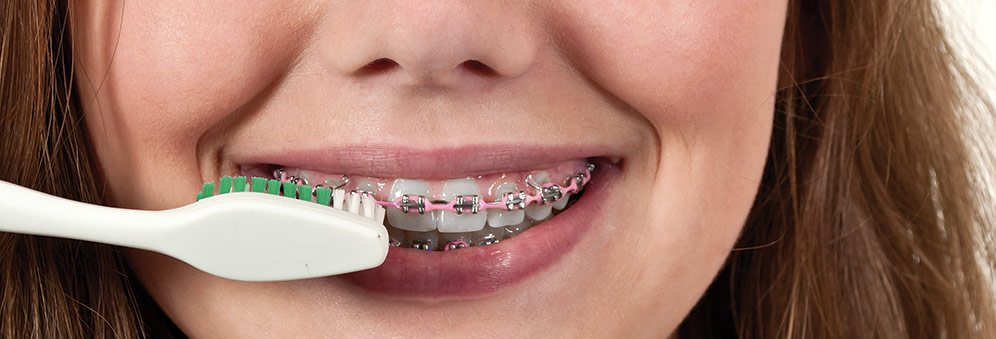Investigating the relationship between braces and gum disease
Using molecular technologies to monitor plaque, researchers found no predisposition for children wearing braces to gum disease - as long as they follow brushing instructions carefully.
At least 1000 species of bacteria are known to be able to reside within the oral cavity. On average, individuals carry between 50 and 200 species, and some people naturally carry more pathogens in their plaque than others.
Investigating the relationship between orthodontic braces and increases in pathogens has revealed some surprising results, as well as good news for patients.
It has typically proven difficult to grow pathogens outside of the body, however, from his research Dr David Dymock, Director of Undergraduate Education in the Faculty of Medicine and Dentistry, has gained new insights into bacterial changes in the mouth.
Funded by the British Orthodontic Society, the research team, which included orthodontists from the Dental School and Bristol Dental Hospital, used molecular technologies to monitor the plaque environment of the mouths of children undergoing orthodontic treatment.
By taking various samples at four stages during the treatment, they could monitor how the bacterial composition of plaque changed over time.
Given the diversity of cases, changes were then analysed in the context of that individual’s plaque profile. During each test, samples were taken from four different areas around the brace to monitor the prevalence of the periodontal bacteria at various locations in the mouth.
The research also assessed bacterial patterns for different types of brace: braces with metal bands wrapped around molars, and braces with bonds which have brackets cemented directly on to the teeth.
Each plaque sample was analysed for the presence of those particular pathogens linked to gum disease using a diagnostic DNA microarray: a collection of microscopic DNA spots attached to a solid surface, each of which detects important oral bacteria.
The results were cross-referenced by running a gel-based test known as Denaturing Gradient Gel Electrophoresis (DGGE) which produces a barcode-like profile for each sample and takes a more global perspective of the changes in the bacterial population.
Between them, these techniques provided a clear picture of what is happening to bacteria on the tooth surface under the braces. The analysis resulted in new findings showing the development of bacteria just three months after the braces were fitted, developments that hadn't been seen before at such early stages.
Of the two brace types, bonds were slightly more problematic than bands, but generally little difference was identified between the two. In the case of both bands and bonds these pathogens continued to increase, however, they then decreased after the braces were removed, at which point there was a definite sign of recovery.
The research concluded that there was no predisposition for children wearing braces to periodontal disease - as long as they follow the orthodontists’ brushing instructions carefully; reinforcing the need for orthodontic practices to provide detailed brushing instructions to their patients.
Related researchers
Related research groups
Related publications
 Study Oral and Dental Sciences
Study Oral and Dental Sciences
Combine clinical dentistry and scientific research in our truly interdisciplinary programme.
